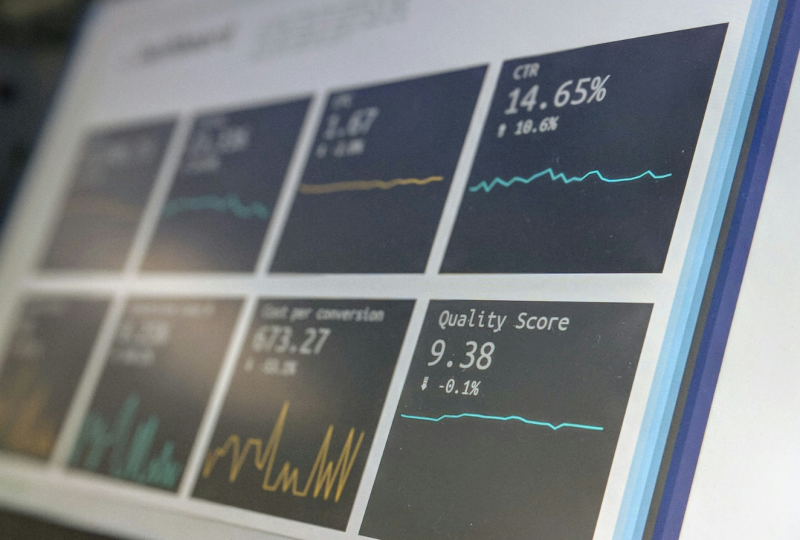12 Strategies for Brokers to Optimize Liquidity
Apr 28, 2025

Liquidity defines market efficiency. It dictates how smoothly assets trade, affects execution speed, and determines pricing stability. Brokers must master liquidity management to thrive. A well-optimized liquidity strategy minimizes risk, sharpens competitive advantage, and ensures top-tier service for clients.
- Understanding Liquidity and Its Impact
Liquidity is the ease with which assets can be bought or sold without triggering drastic price shifts. Deep liquidity leads to tighter spreads, lower trading costs, and faster execution. Without it, volatility surges, spreads widen, and trades become costlier. Brokers must remain vigilant, continuously monitoring liquidity conditions and implementing adaptive strategies to maintain fluid markets.
A broker’s ability to provide liquidity directly influences their reputation and client retention as traders prioritize platforms that ensure smooth transactions with minimal disruption. In the evolving financial landscape, a decentralized solution like a no KYC crypto wallet offers traders greater flexibility and anonymity while still ensuring market liquidity, making such a tool an increasingly attractive option for modern traders.
- Securing Reliable Liquidity Partners
Strong partnerships with reputable liquidity providers, banks, hedge funds, and prime brokers give brokers access to deeper liquidity pools. Key considerations include execution speed, pricing competitiveness, and provider stability.
Brokers should negotiate favorable terms to secure better spreads and faster execution, enhancing their market position and protecting client interests. Establishing long-term relationships with multiple providers can lead to exclusive pricing arrangements and preferential treatment during high-volatility periods, ensuring that brokers maintain uninterrupted access to liquidity even during market stress.
- Diversifying Liquidity Sources
Relying on a single liquidity provider creates vulnerability. Multiple sources strengthen execution quality, reduce counterparty risk, and improve pricing. Smart order routing systems can dynamically select the best available liquidity, optimizing performance.
Hybrid models, combining bank liquidity, non-bank liquidity, and internal order flow, further reinforce market stability and execution efficiency. Diversification also helps brokers adapt to shifting market conditions, ensuring that liquidity is always available, even if one provider experiences disruptions.
- Deploying Liquidity Aggregation Systems
Aggregating liquidity from multiple providers reduces spreads and improves order execution. Brokers using aggregation systems benefit from enhanced price discovery, reduced market impact, and more flexible trading conditions. This approach fosters a more competitive trading environment, which is critical in fast-moving markets. By integrating liquidity aggregation technology, brokers can create a more seamless execution experience, offering clients better pricing and deeper market depth without compromising speed or efficiency.
- Strengthening Risk Management
Liquidity optimization hinges on robust risk management. Pre-trade controls should cap trade size and leverage to prevent excessive exposure. Post-trade analytics must assess execution quality and liquidity performance. Automated real-time monitoring detects potential shortages, mitigating risks before they escalate.
Stress testing and scenario analysis help brokers adapt to evolving market conditions, ensuring stability even during periods of turbulence. Additionally, implementing dynamic margin requirements can help control leverage exposure, ensuring that traders and brokers alike remain protected against sudden market fluctuations.
- Leveraging Advanced Trading Technologies
Technology drives liquidity optimization. High-frequency trading (HFT) algorithms accelerate execution and enhance market efficiency. API integrations seamlessly connect brokers to liquidity providers. Artificial intelligence (AI) and machine learning (ML) analyze market trends, optimizing liquidity strategies in real time.
Blockchain is revolutionizing settlement processes, reducing delays, and adding transparency to liquidity management. Cloud-based infrastructure further enhances execution speed, ensuring that brokers remain competitive in a technology-driven trading environment.
- Expanding Order Type Offerings
A diverse range of order types gives traders flexibility and improves liquidity. Market orders execute instantly, while limit orders set price thresholds. Stop-loss orders safeguard against losses, and iceberg orders break large trades into smaller segments to minimize market impact.
Fill-or-kill (FOK) and good-till-cancelled (GTC) orders further enhance execution options, enabling traders to navigate market conditions effectively. The introduction of algorithmic trading strategies allows traders to automate their order execution based on predefined conditions, optimizing liquidity access and improving trade efficiency.
- Controlling Market Volatility
Volatility can drain liquidity, making proactive management essential. Adjusting leverage in high-volatility environments safeguards clients from excessive risk. Brokers should stay ahead of economic developments that impact liquidity by closely monitoring news events.
Implementing circuit breakers can prevent panic-driven price crashes, adding stability to the market. Historical analysis and predictive modeling enable brokers to anticipate volatility and adjust strategies accordingly. By integrating sentiment analysis tools that track market sentiment across news and social media platforms, brokers can gain insights into potential liquidity shifts before they occur.
- Building Trust Through Transparency
Client confidence depends on transparency. Clear pricing structures with no hidden fees build trust. Offering educational resources empowers traders with knowledge of liquidity management and execution strategies. Responsive, real-time customer support ensures traders receive immediate assistance.
Providing detailed trade reports strengthens credibility, reinforcing a broker’s commitment to fairness and accountability. Brokers that offer public liquidity metrics and real-time execution reports further differentiate themselves in the market, demonstrating their commitment to ethical trading practices.
- Navigating Regulatory Compliance
Regulatory adherence is non-negotiable. Brokers must maintain sufficient capital reserves to meet liquidity requirements. Best execution policies must be rigorously implemented to guarantee fair trade execution. Regulatory reporting ensures transparency and builds confidence among clients and authorities alike.
Given the rapid evolution of regulations, brokers must stay informed and integrate compliance best practices to mitigate legal and financial risks. Adopting automated compliance solutions can streamline regulatory reporting and reduce operational burdens, ensuring seamless adherence to evolving legal frameworks.
- The Role of Data Analytics in Liquidity Management
Data-driven decision-making is central to effective liquidity management. Brokers should leverage big data analytics to assess historical liquidity patterns, identify market trends, and predict future liquidity requirements. Real-time data feeds enhance execution strategies, ensuring that brokers can respond to sudden market shifts with agility. Additionally, artificial intelligence-powered analytics platforms can optimize liquidity sourcing by continuously evaluating provider performance, spread competitiveness, and order execution efficiency.
- Strengthening Infrastructure for Scalability
As trading volumes grow, brokers must ensure that their liquidity infrastructure can scale accordingly. Low-latency execution systems, redundant server networks, and cloud-based trading solutions help brokers maintain operational efficiency under high market demand. A scalable liquidity framework reduces execution delays, enhances market connectivity, and allows brokers to expand into new asset classes without disruption.
Conclusion
Liquidity optimization isn’t optional, it’s the foundation of a successful brokerage. Strong liquidity provider relationships, cutting-edge technology, strategic risk management, and unwavering regulatory compliance set top-tier brokers apart. Data-driven decision-making, predictive analytics, and seamless execution strategies enhance liquidity control, ensuring a competitive edge. Brokers who proactively refine their liquidity approach will secure long-term growth, increase profitability, and elevate client satisfaction.




